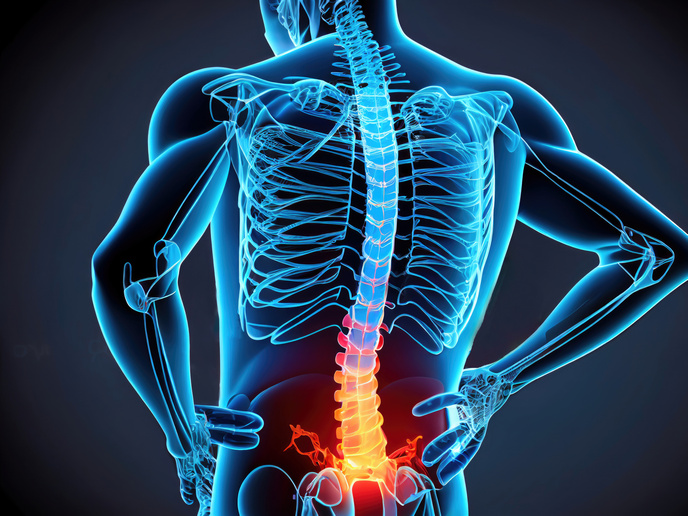Deep learning to the rescue for chronic lower back pain
To investigate how chronic pain affects different patients’ bodies, scientists supported by the EU-funded BODYinTRANSIT project developed a deep learning method to analyse the biometric data of people with chronic conditions. Their research was published in the ‘IEEE Journal of Selected Topics in Signal Processing’. As explained in a news item posted on the website of BODYinTRANSIT project coordinator University Carlos III of Madrid (UC3M), the researchers hypothesised that people with chronic lower back pain have variations in their biometric data compared to healthy individuals. These variations stem from body movements or walking patterns resulting from an adaptive response to avoid further pain or injury.
Where conventional methods fail
Currently, challenges such as the scarcity of relevant data, the particularities of each type of pain and the complexity involved in measuring biometric variables have made it difficult to accurately identify the biometric differences between people with and without pain. “People with chronic pain often adapt their movements to protect themselves from further pain or injury. This adaptation makes it difficult for conventional biometric analysis methods to accurately capture physiological changes. Hence the need to develop this system,” states study first author Dr Mohammad Mahdi Dehshibi of UC3M in the news item. The new method developed uses a type of deep learning called sparsely-connected recurrent neural networks combined with gated recurrent units, a type of neural network unit used to model sequential data. Using this method, the researchers succeeded in capturing changes in pain-related body behaviour over time. The method outperforms existing state-of-the-art approaches used to accurately classify both pain levels and pain-related behaviour. The researchers’ new method has been tested with the EmoPain database that contains data on pain levels and pain-related behaviours. “This study also highlights the need for a reference database dedicated to analysing the relationship between chronic pain and biometrics. This database could be used to develop applications in areas such as security or healthcare,” notes Dr Dehshibi. The first author goes on to explain that the method could be used to improve chronic pain measurement and treatment in people suffering from conditions such as fibromyalgia, arthritis and neuropathic pain. “It can help control pain-related behaviours and tailor treatments to improve patient outcomes. In addition, it can be beneficial for monitoring pain responses during post-surgical recovery.” Senior author and UC3M Associate Prof. Ana Tajadura-Jiménez explains how this work is relevant to other medical processes: “In addition to chronic pain, altered movement patterns and negative body perceptions have been observed, such as in eating disorders, chronic cardiovascular disease or depression, among others. It is extremely interesting to carry out studies using the above method in these populations in order to better understand medical conditions and their impact on movement. These studies could provide valuable information for the development of more effective screening tools and treatments, and improve the quality of life of people affected by these conditions.” The BODYinTRANSIT (Sensory-driven Body Transformation Experiences On-the-move) study could also have applications in fields ranging from sports to virtual reality and robotics to art and fashion. The project ends in 2026. For more information, please see: BODYinTRANSIT project website
Keywords
BODYinTRANSIT, deep learning, pain, back pain, lower back, chronic conditions, movement



